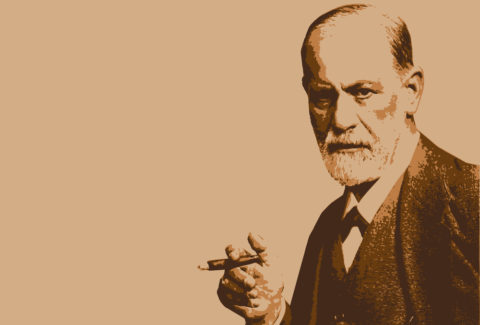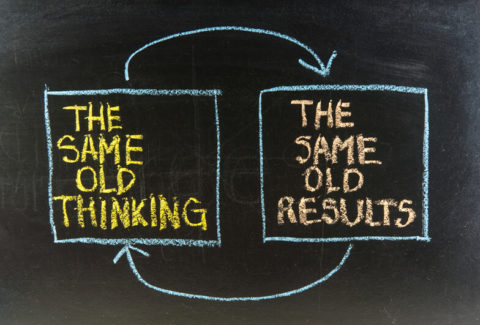Wearing Your Psychodynamically Informed Hat: Introducing the Concept of Defense Mechanism

Wearing Your Psychodynamically Informed Hat: Introducing the Concept of Defense Mechanism
“His relationships are all distant, online, and one time, one of his online girlfriends visited him, but then broke up with  him soon after; and he was devastated. Ever since, he has been decompensating.” Janet narrated this to Evelyn, her clinical supervisor and was alluding to Joel, who had stopped his medications, relapsed to substance use, became suicidal, and had displayed aggressive behavior.
him soon after; and he was devastated. Ever since, he has been decompensating.” Janet narrated this to Evelyn, her clinical supervisor and was alluding to Joel, who had stopped his medications, relapsed to substance use, became suicidal, and had displayed aggressive behavior.
“Let’s take care of the urgent issues, problem solve, and then take some time to better understand Joel,” responded Evelyn, who helped Janet come up with the next steps and addressed the urgent issues. Evelyn then added, “Now, let us talk about the nature of Joel’s situation.” And so, they did.
 In mental health, being “eclectic” means using a combination of modalities in your work with your patients and clients, not ascribing to any one specific method, as necessary, from time to time. This can be viewed by some as “unclean,” or “non-rigorous,” while, still, others, view as positive the ability to shift from one modality or one orientation to the next and then easily shift back, as necessary. Eclectic, for example, is the ability to be supportive when needed; to employ CBT skills and work on the cognitive distortions, when they are present; to use MI in the midst of ambivalence; and to wear your psychodynamic hat when necessary, to understand any deep-rooted drives and defenses.
In mental health, being “eclectic” means using a combination of modalities in your work with your patients and clients, not ascribing to any one specific method, as necessary, from time to time. This can be viewed by some as “unclean,” or “non-rigorous,” while, still, others, view as positive the ability to shift from one modality or one orientation to the next and then easily shift back, as necessary. Eclectic, for example, is the ability to be supportive when needed; to employ CBT skills and work on the cognitive distortions, when they are present; to use MI in the midst of ambivalence; and to wear your psychodynamic hat when necessary, to understand any deep-rooted drives and defenses.
Regardless of your orientation or viewpoint for using an eclectic method and approach to treatment, there is power in understanding the coping mechanisms of your patients and clients. Using the discussion between Evelyn and Janet about Joel, let us review together a neglected yet powerful tool that we all need to possess, at all times, to help us better understand our patients and clients. Let us start with an overview of defense mechanisms.
At a time when Neurology and Psychiatry were considered inseparable, Sigmund Freud, a neurologist, made the observations that patients needing mental health care improved as they were allowed to talk. He then worked on what later became known as free association, where patients were encouraged to say whatever came to their mind without any filter. In the process, Freud made another observation: Though some people were better at free associating than others, those same patients also, at times, had difficulty free associating. Freud hypothesized that patients had difficulty free-associating when the content was about painful experiences, which had been repressed. This type of repression expressed itself in the form of anxiety, and patients were able to cope with this anxiety through what he called, defense mechanisms.
observations that patients needing mental health care improved as they were allowed to talk. He then worked on what later became known as free association, where patients were encouraged to say whatever came to their mind without any filter. In the process, Freud made another observation: Though some people were better at free associating than others, those same patients also, at times, had difficulty free associating. Freud hypothesized that patients had difficulty free-associating when the content was about painful experiences, which had been repressed. This type of repression expressed itself in the form of anxiety, and patients were able to cope with this anxiety through what he called, defense mechanisms.
Defense mechanisms are unconscious strategies we use to protect ourselves from the anxiety that come from painful experiences, which may be associated with some unwanted thoughts and feelings. As I often say,
-
the first step in knowledge is the ability to name things,
-
the second step is the ability to define, and
-
the third step is the ability to categorize.
When we consider defense mechanisms, there are several ways to categorize them. However, as a way to apply a simple approach, a safe categorization is mature and immature defense mechanisms. This is an oversimplification, but it is also a great start to at least think about the concept of defense mechanisms, as you wear your psychodynamically informed hat.

References:
-
Freud, A. (1937). The Ego and the Mechanisms of Defence, London: Hogarth Press and Institute of Psycho-Analysis. (Revised edition: 1966 (US), 1968 (UK)).
-
Paulhus, D.L., Fridhandler B., and Hayes S. (1997). Psychological defense: Contemporary theory and research. In Briggs, Stephen; Hogan, Robert Goode; Johnson, John W. (1997). Handbook of personality psychology. Boston: Academic Press. pp. 543–579.
-
Cramer, P. (1991). The Development of Defense Mechanisms: Theory, Research, and Assessment. New York, Springer-Verlag.
-
Hock, Roger R. “Reading 30: You’re Getting Defensive Again!” Forty Studies That Changed Psychology. 7th ed. Upper Saddle River: Pearson Education, 2013. 233–38.
-
Kernberg O (July 1967). “Borderline personality organization”. J Am Psychoanal Assoc15 (3): 641–85.
-
Vaillant, George E. (1977). Adaptation to life. Boston: Little, Brown.








